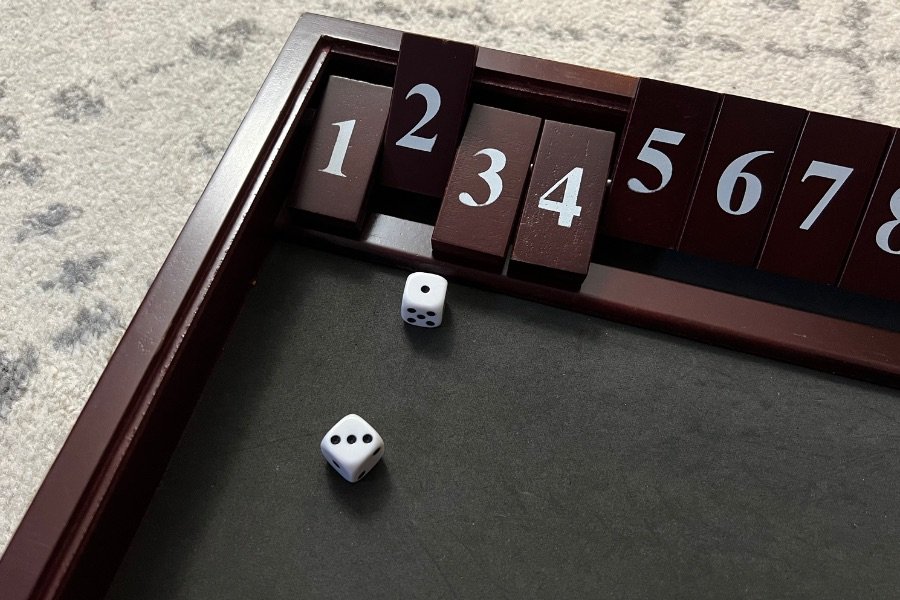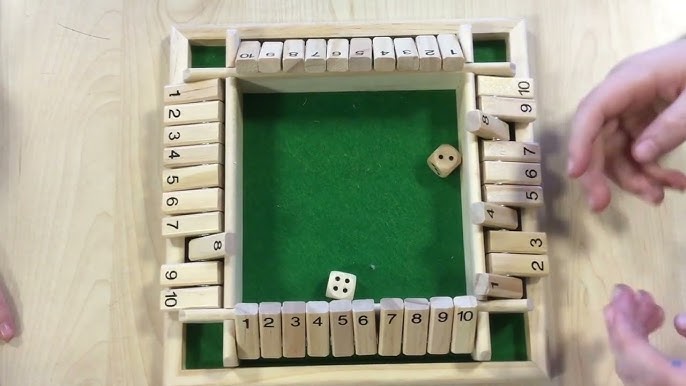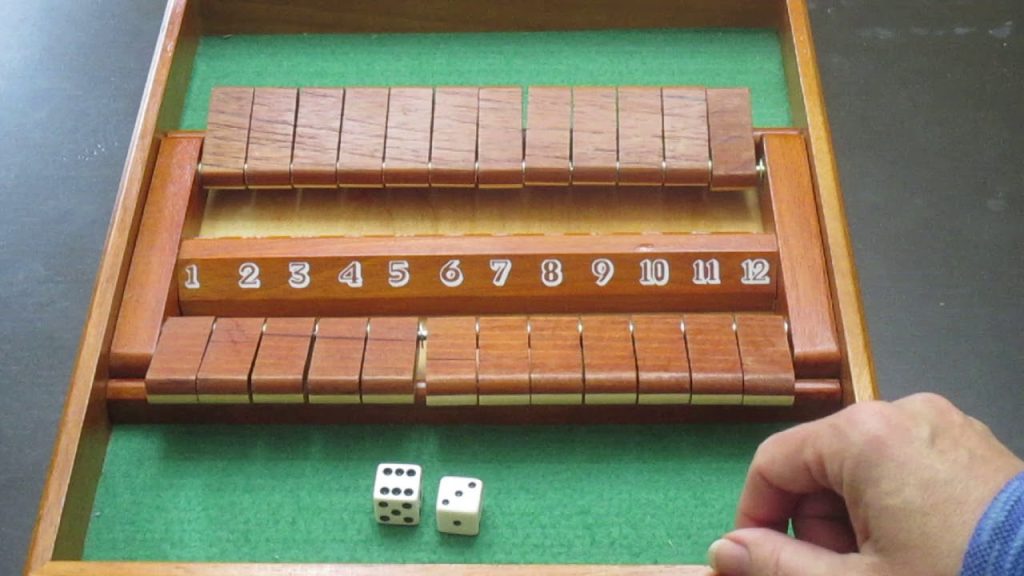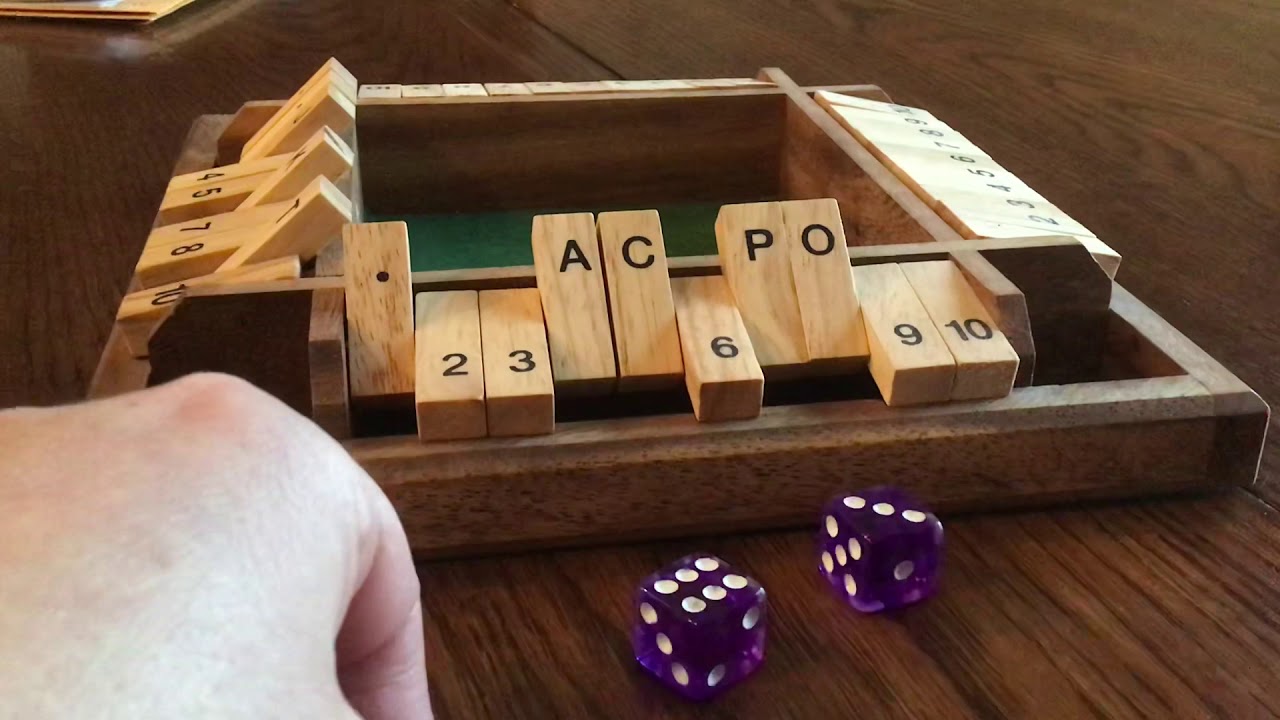Introduction
Shut the Box is a classic dice game that has been enjoyed for centuries. Often played as a pub game, it requires strategy, quick thinking, and a bit of luck. It is simple to learn and can be enjoyed by players of all ages. Whether you’re playing for fun, competing against others, or using it as an educational tool, Shut the Box offers endless entertainment. Gameplay variations, strategies, and tips to help you master the game.
Players take turns rolling the dice and selecting one or more tiles whose sum matches the roll. The objective is to “shut” as many tiles as possible, with a perfect game occurring when all tiles are flipped down. While luck plays a role, strategic choices—such as deciding whether to eliminate larger or smaller numbers first—can greatly impact the outcome. Various gameplay variations exist, including different tile configurations and scoring methods, making each session unique. Whether you’re a beginner or a seasoned player, understanding key strategies and probability principles can help improve your chances of success. Visit here

Understanding The Game Setup
Shut the Box is traditionally played using a wooden game board with numbered tiles from 1 to 9 or sometimes up to 12, depending on the version. Players also use two six-sided dice to determine their moves. The objective of the game is to close as many numbered tiles as possible based on the dice rolls. The game can be played solo or with multiple players, making it versatile for different settings.
Before the game begins, the board is placed in the center, and all numbered tiles are set in the upright position. Each player rolls the dice, and the person with the highest total goes first. The gameplay then proceeds in turns, following the established rules.
Basic Rules Of Shut The Box
To start a turn, the player rolls two dice. The total value of the dice determines which numbered tiles can be shut. For example, if a player rolls a 7, they have several options: they can shut the 7 tile, or they can shut a combination of tiles that add up to 7, such as 3 and 4 or 2 and 5. The player continues rolling the dice and shutting numbers until they roll a total that cannot be matched with the remaining open tiles. Once this happens, the turn ends, and the sum of the open tiles is recorded as the player’s score.
In a multiplayer game, play continues in a clockwise direction until each player has taken a turn. The player with the lowest total remaining at the end of their turn is the winner. If a player successfully shuts all the tiles, they automatically win with a perfect score of zero.
Strategy And Decision-Making
While Shut the Box is a game of chance, strategy plays a crucial role in maximizing the chances of winning. One of the key strategies is selecting the best tile combination to shut when given multiple options. Choosing numbers that leave better future possibilities can help prolong a turn. For example, keeping lower numbers available for later turns often improves the chances of continuing the game.
Players should also consider probability when making decisions. Since rolling a total of 7 is the most common outcome with two dice, prioritizing numbers that accommodate 7 may be a good approach. Additionally, experienced players often shut tiles in a way that leaves them with multiple ways to use future dice rolls, rather than limiting themselves to fewer possible moves.

Variations Of Shut The Box
Over time, various versions of Shut the Box have emerged, each with slight rule variations. Some versions use a game board with numbers 1 through 12 instead of 1 through 9. This variation increases the complexity and length of the game. In another popular variant, players use a single die instead of two, which changes the probability of rolling certain numbers and makes shutting the higher numbers more difficult.
Some house rules allow for different scoring methods, such as cumulative scoring over multiple rounds. In this version, players continue playing rounds, keeping track of their scores over several turns, and the player with the lowest total after a predetermined number of rounds wins.
Another variation involves introducing betting elements. Historically, Shut the Box was often played as a gambling game where players placed wagers before starting. While this is less common in casual play, some groups still use this format for added excitement.
Playing Solo Or In Groups
One of the appealing aspects of Shut the Box is that it can be played solo or in a group setting. When playing alone, the goal is to achieve the lowest possible score or even shut all the numbers to achieve a perfect game. This can be a great way to practice strategies and improve decision-making for competitive play.
When playing in a group, the game becomes more interactive and competitive. Players take turns trying to achieve the best score while also observing their opponents’ strategies. In a social setting, this can lead to friendly rivalries and lighthearted competition. Some versions of the game allow multiple rounds, where each player takes multiple turns, and scores are tallied at the end to determine an overall winner.
Educational Benefits Of Shut The Box
Beyond entertainment, Shut the Box is an excellent educational tool for developing mathematical skills. Since the game involves addition and probability calculations, it is often used in classrooms to help young learners improve their arithmetic abilities. By making learning fun, it encourages children to practice mental math and strategic thinking.
For adults, Shut the Box can also be a useful exercise for maintaining cognitive function. Games that involve decision-making and probability analysis have been shown to help keep the mind sharp, making this game beneficial for players of all ages.
Common Mistakes To Avoid
While Shut the Box is a simple game, players often make common mistakes that can affect their results. One frequent error is not considering all possible tile combinations before making a move. Inexperienced players may rush to close a single tile without exploring whether a different combination would allow for more flexibility in future rolls.
Another mistake is failing to manage risk effectively. Since the game involves probability, players should be aware of which numbers are more likely to appear based on dice roll statistics. Ignoring these probabilities can lead to premature losses and higher scores.

Tips For Improving Your Game
To become a better Shut the Box player, it helps to practice different strategies and pay attention to probability. One effective tip is to track past rolls to identify patterns and improve decision-making. While the game ultimately depends on chance, being mindful of the numbers that appear most frequently can enhance gameplay.
Players should also experiment with different play styles and variations to gain a broader understanding of the game. Trying different rule sets can help develop adaptability and improve overall performance. Additionally, practicing solo can refine strategic thinking and prepare players for competitive games.
Conclusion
Shut the Box is a timeless dice game that combines chance, strategy, and mathematical thinking. With simple rules and multiple variations, it offers an engaging experience for players of all skill levels. Whether played solo, with friends, or as a learning tool, the game provides endless fun while challenging players to think critically. Understanding the rules, developing a strategic approach, and avoiding common mistakes can significantly improve gameplay and increase the chances of winning. With practice and thoughtful decision-making, anyone can master Shut the Box and enjoy its many benefits.

